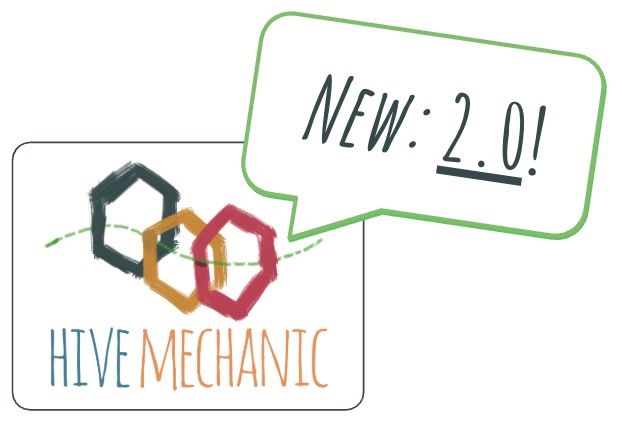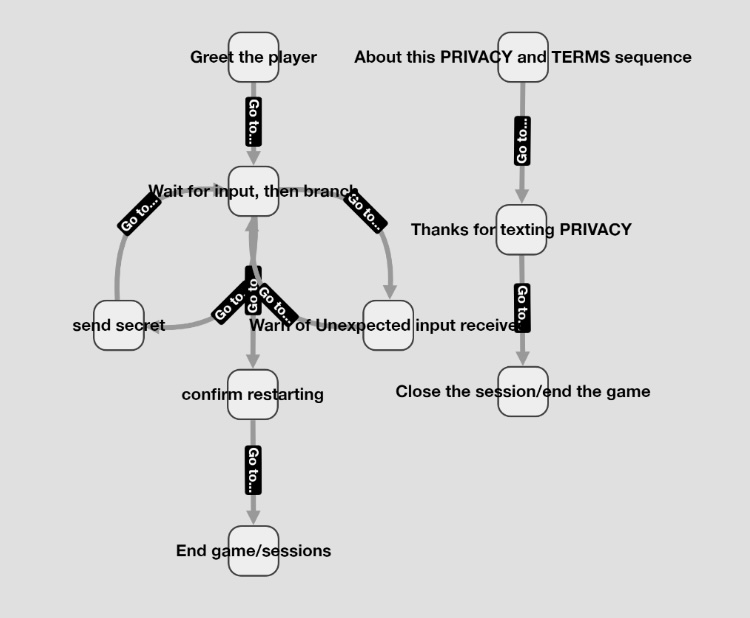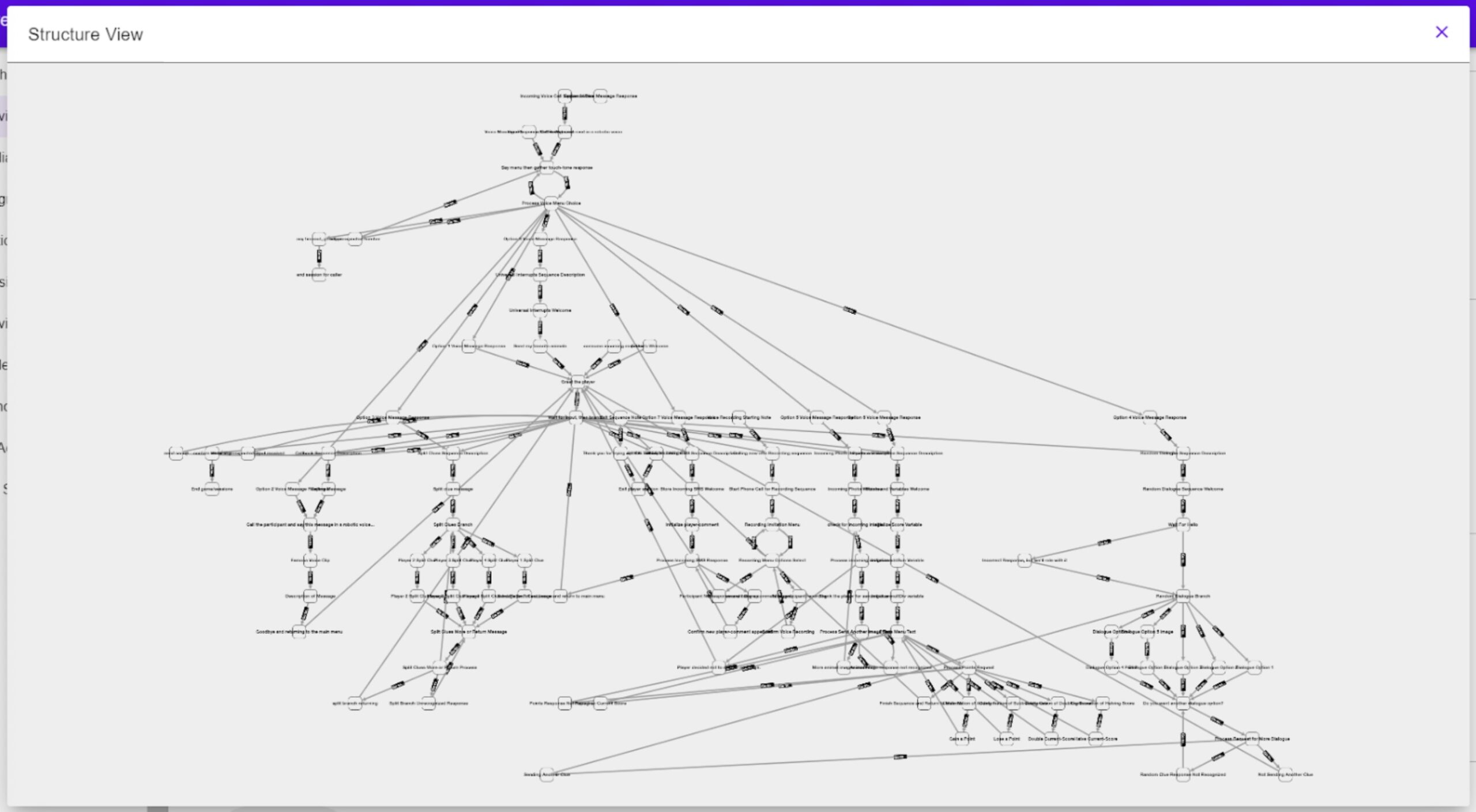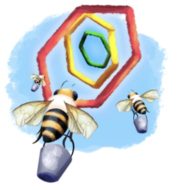Version 2.0 of Hive Mechanic: Release Notes

October 22, 2025: Hive Mechanic version 2.0 was published on October 22, 2025 (see detailed announcement), our free tool to create neighborhood games and interactive stories. New features are detailed below. (Hive Mechanic is an open-source tool that allows anyone to make outdoor and mobile experiences without coding skills. More than 50 towns and cities have been trained to make their own experiences, often based at public libraries, community museums and art spaces. Examples include text-with-a-sculpture, puzzle hunts, branching audio tours, collaborative storytelling with AI, play with city data, weather feeds, and more. Hive Mechanic was designed and produced by the Playful City Lab at the American University Game Center, as part of our design recipes, tools and tactics for local play and story games; the open-source code was engineered by the Behavioral Research Innovation Center and Audacious Software.)
New features to stretch the imagination
- Interactive Story Phone Calls – now including branching audio, voice mail, text-to-speech and more. Added support for audio interactivity by connecting basic phone calls to our card system. Also includes playing audio files like music, voice recognition, and can accept participant input using voice or number pad actions, including as recorded voice messages. See also our recipes for “Phone Calls to Lead a Hunt” and “Insider Voice Guide with Choices” (#6).
- Story diagrams for our editors. By popular request – Activity Maps visuals are now auto-generated for all activities to show the cards as a map of connected, moveable nodes.


- Branching based on city data and services (APIs and XML data), as described in our Recipe Book (p.26), including:
- Today’s weather changes the story. Imagine a story that changes on the first day that snow falls, or when climate change leads to yet another usually hot day. New parts of the story are revealed and adventures unlocked!
- Pollution data. Like a story that changes if the particle count today is higher than usual in your city.
- Bus data. Like starting a game when the bus is just about to come, or giving a different clue after the bus departs, or giving a different line of dialog if foreclosure rates have recently gone up.
- Foreclosure data. Like a different line of dialog if foreclosure rates have recently gone up.
- Business and Yelp data. Like a story that incorporates the most recent positive review of a new restaurant for your city.
- Visualizing the future together. Visualizing an alternative future. Like telling a story of how a local park might look different in five years that synthesizes what three residents have said, or even draws an image of how a monument could be revised.
- Data Query card added to interact with online APIs and respond to live events and data, such as weather events, bus and city data, the Internet of Things, and more.
- AI image generation (and other html form posts with file transfer) card added to interact with online APIs such as DALLe image generation.
- Polling and voting. The Summarize Variable card can perform summary operations on variables containing inputs and results from across a game.
- WhatsApp and International Support. Text and images are interactive with WhatsApp, using a combination of Twilio APIs and WhatsApp services. Rates are similar to sending and receiving text messages.
- Time-based clues. For example, if the player hasn’t solved the puzzle in 3 minutes, send them a clue. See time-based clue card description.
- Easy install with a plug-and-play setup (‘dockerized‘). Works for multiple operating systems — you no longer need a Linux setup, and you can now run Hive on a PC with nearly all components automatically installed.
- Content Moderation and Approval System functionality added to variable cards and Hive Mechanic platform. For example, a participant sends in a message that will update part of the text in an activity (like a joke), but this won’t appear until after a moderator has approved it. This prevents bad actors from sending in inappropriate content.
- Facilitator alerts for live events and puppet masters. For example, to alert a staffer near a clue that a player has just arrived by calling their phone or sending them a text message (via the destinations feature of the Send Message card, or the Launch Activity card).
- Support for legal terms and conditions. Accept Terms and Check Terms Acceptance cards added to allow the creation of activities that require participants to accept terms and conditions before participating in an activity.
Additional / advanced features
- Comparison Branch card added to branch an activity based on if a set operator value is true, false, or errored when evaluating a relationship between variables.
- More math! Arithmetic Operator card added to perform basic math options within an activity and save their results using variables. Relatedly, the Calculate Percentage card allows us to summarize percentages across users.
- Save images that are texted by users. If incoming messages contain images or multimedia, we keep them in an easy directory – and can change the story when a multimedia item is received.
- Annotated examples. With our “editor’s note” card, editors can leave notes for themselves or other editors that players never see.
- Card notations added to each card which can be toggled on and off using a basic users toggle help button.
- Nesting for games and activities. The new launch session card can launch new activities from within a game, including through players inviting others by sharing a phone number.
Interface
- Toggle switch between Basic or Advanced mode, which toggles how much help text is shown on the cards.
- Added the Media Library, where users can upload media to use in their activities.
- Added the Moderation page, where users can deny or approve incoming updates to variables visible to other players.
- Updated the Dashboard to include data and analytics for users to see how their game is being played.
- Updated the Activity Log to allow users to see and download incoming media from players.
As an indicator of scale of software development, there are more than 900 commits on this codebase since it began. That’s a lot of fixes and modifications! A significant majority — than 800 — came with the 2.0 release, i.e., since the beginning of 2001.
Citation suggestion
Stokes, Benjamin, Chris Karr, Meagan Couture, Hazel Arroyo, Eric Schoenborn, Mitchell Loewen, Tristin Salin, Michael Barletta, Eva Wallis, and contributors (October 22, 2025). Hive Mechanic 2.0: A Game Engine for Cities to Embed Storytelling and Broad Interactivity. Open-source code published on GitHub and tagged 2.0.
